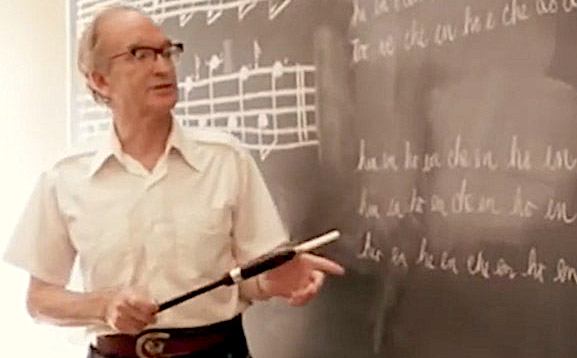
The following is from the Oban Times of 51 years ago and is by their then piping correspondent John MacFadyen. It mentions the Institute of Piping. This body was formed of the Piobaireachd Society, the Army School and the College of Piping and was the forerunner of today’s Piping and Drumming Qualifications Board…
…….The Institute of Piping course for teachers has got off to a flying start and for the past three weeks some 20-odd teachers of piping from a wide area have attended the course in the College of Piping, Glasgow.
Some of our foremost players such as Hugh MacCallum, Duncan Johnstone, Ronald Lawrie, Angus MacLellan, a contingent from Manchester, Jean Francois Allain from Nantes Henry McGuinness from Lochgilphead, and a number of other dedicated teachers, are attending.
The object of the course is not to teach piping but to outline the theory of teaching, the theory of sound, give some historical background considered necessary, and to discuss in detail such aspects of piping as notation and the maintenance of the instrument.
It was to this last subject that Captain John MacLellan addressed himself at the first session and on which he gave a most interesting lecture.
He began by discussing the bag itself and the relative merits of the various substances which have from time to time been tried out in various parts of the world. Elk, horse, kangaroo and deer hide were discussed as were plastic, rubber and the traditional sheepskin.
The conclusion reached was that by far the best material for making a pipe bag for use in Scotland was in fact the old-fashioned sheepskin. It allows the moisture from the bag to escape whilst at the same time being air tight.
He then went on to discuss the shape and size of a bag and to underline the importance of getting a bag to suit the physical proportions of the player.
To teach a piper to tune a bagpipes an almost impossible task, as teachers of piping of all ages have found, but with the aid of an overhead projector and some excellent charts, John MacLellan showed, as far as it is possible to indicate sounds on paper, how it is essential to produce a matching line of sound from drones to that of the chanter.
Old time pipers would have called this ‘balance’ and although they may not have been able to explain what they were listening for, they certainly knew it when they heard it.
In another session the writer outlined the road a student would be expected to take to prepare himself for ‘O’ grade piping examinations. General musicianship, piping, and knowledge of music were discussed at length and last year’s ‘O’ grade papers were considered so that teachers would have some idea of what is to be expected of their pupils.
It was stressed that while young pupils should be encouraged to go forward for such an examination, they should not be deluded by teachers into thinking that if they can play the tunes in the syllabus that that alone will ensure a pass.
The theory of sound and the scale of the bagpipe were dealt with by Seumas MacNeill. The former were demonstrated by a variety of pieces of apparatus. In a separate lecture he made a lucid and interesting comparison of the bagpipe scale and the just scale, and showed where they were coincident and where they differed.
The course still has two more weeks to run and at its conclusion candidates may present themselves for the Institute’s certification.